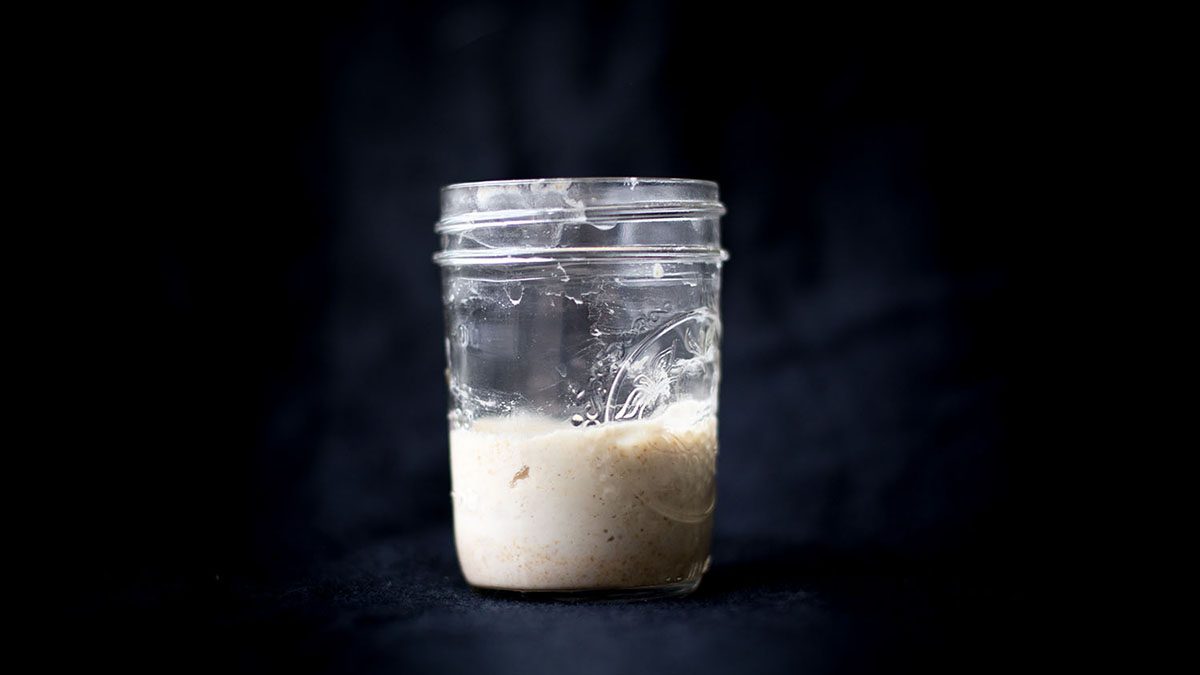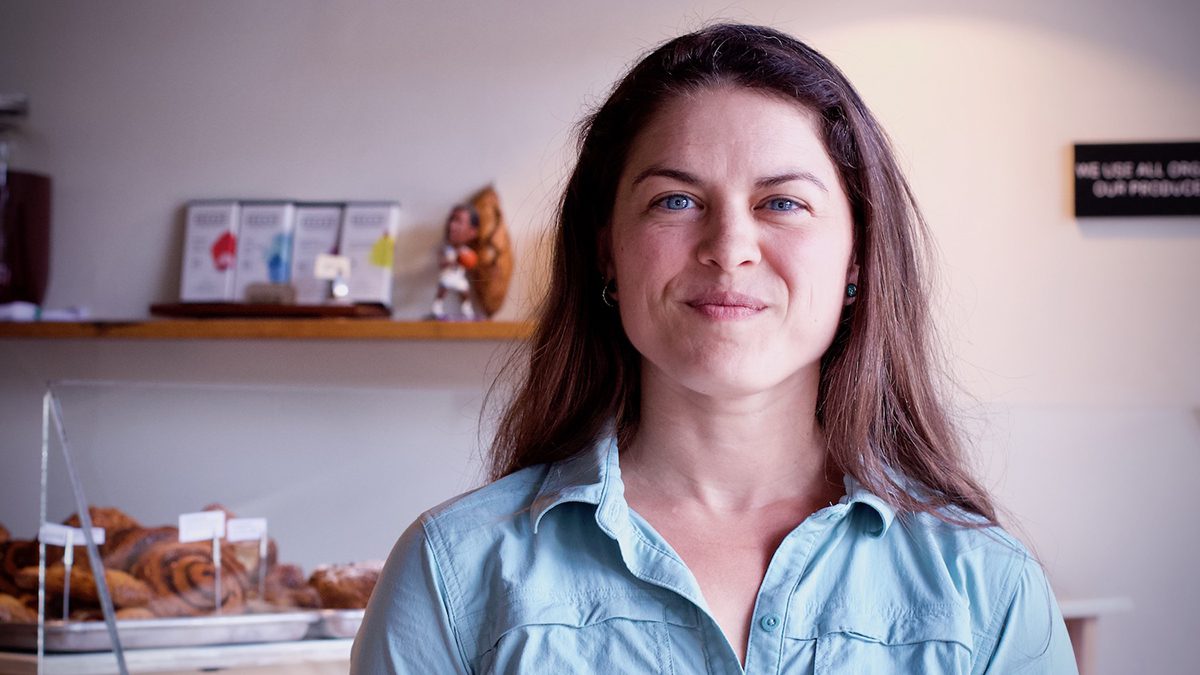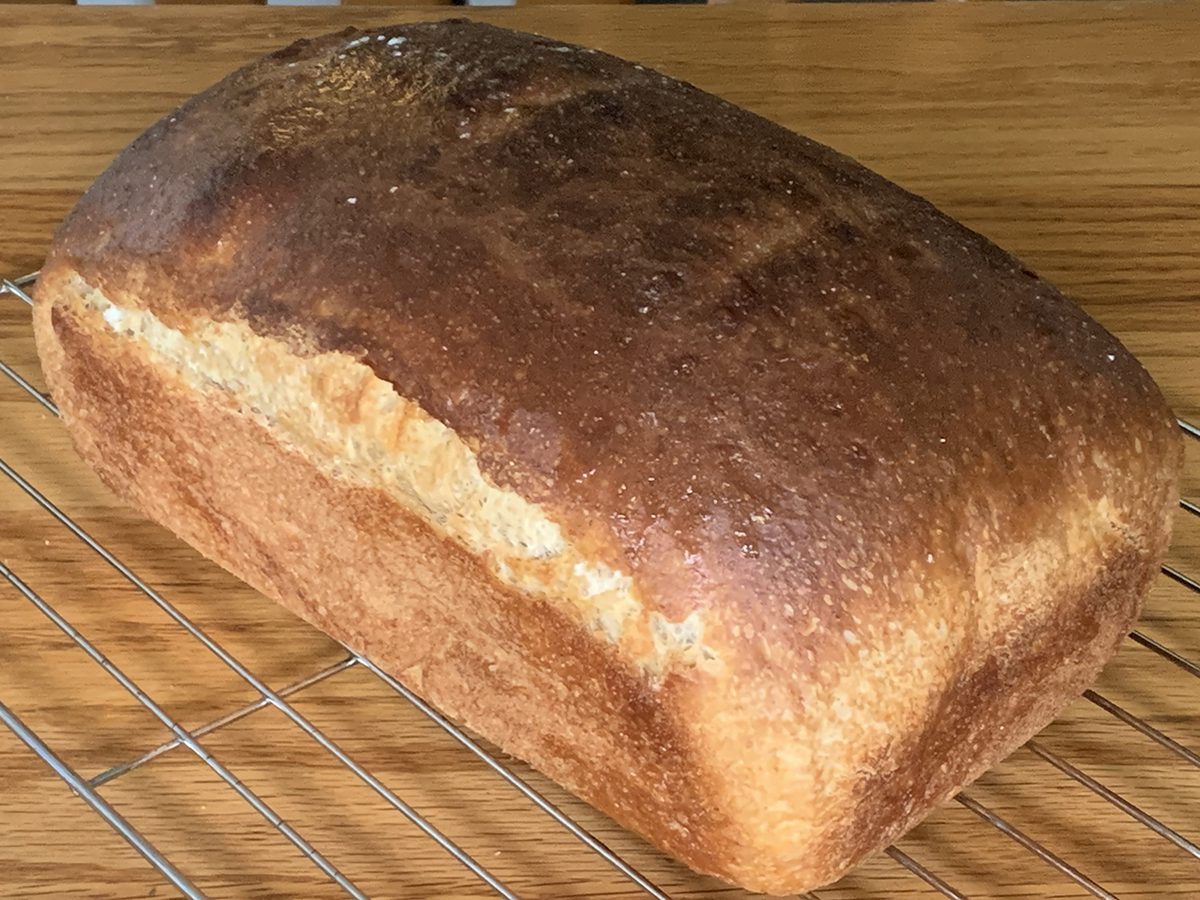
Friendship Cake was as close as cooks came to sourdough bread where I grew up in eastern North Carolina. And you were no pal if you shared a jar of the strange starter, a soupy blend of fruit cocktail, more sugar and packaged dry yeast, even though the starter always came with an undeniably tasty cake.
Black-coffee-begging sweet, dotted with jewel-toned fruit and incredibly moist, Friendship Cake hit the marks of a proper Southern dessert. But the recipe had nothing in common with wild yeast starters that cause sourdough bread to rise — except that you felt obligated to use the starter even if you didn’t want to bake a cake. How else could you morally get rid of the stuff? And who did you want to unfriend?
Supporter Spotlight
The idea of a live starter growing in a jar on the kitchen counter was just one reason why cooks in my neighborhood shunned sourdough bread. San Franciso, bless its heart, could have those tangy, hard-crusted, sourdough loaves whose chewiness was thanks to high-gluten, hard-wheat flour.
North Carolina’s warm, humid climate nurtures soft wheat milled into lower-gluten flours that produce tender biscuits. Southern Biscuit is an actual flour brand here, and the cooks I knew honored tradition. They served baking-powder- or baking-soda-leavened biscuits at nearly every meal. The only time they pulled out yeast was to make even softer lightening rolls at holiday time.
Over time, sourdough bread found a place in North Carolina. In fact, North Carolina State University, the same school that helps the state’s farmers successfully grow soft wheat, plays an important role in international sourdough research.
The university’s Wild Sourdough Project, launched in 2020, builds on the ongoing collaboration between scientists in the Global Sourdough Project. The research aims to understand preexisting sourdough starters from across the world and identify the microbes living in those starters.
While starters date back 6,000 years, exactly how a small number of wild organisms end up in sourdough starter and leaven bread remains unclear.
Supporter Spotlight
Relying on laboratory work and bakers worldwide, who produced and helped assess 500 sourdough starters, researchers have made surprising discoveries and busted some long-held sourdough opinions.
The projects’ results fascinate millions of U.S. home cooks. Their favorite COVID-19 pandemic pastime was baking sourdough. The bread remains one of 2023’s biggest trends, international bakery magazine BBM reports, so the studies also benefit North Carolina’s growing number of artisan bakeries, places like Little Loaf in Wilmington, Union Special in Raleigh, Old World Levain in Asheville and Verdant in Charlotte, all of which produce gorgeous sourdough loaves.
But unlocking the mysteries of wild microbes that help leaven sourdough bread may also help scientists to better understand microbes’ roles in complex ecosystems like oceans and estuaries.
Here’s what sourdough researchers have discovered so far.

Sorry, San Francisco
Wild yeast and beneficial bacteria that produce acids, which flavor sourdough, love San Francisco’s famously foggy climate. Many bakers believed location was the key to good sourdough. “But what we found is that, while there could be tremendous variation between the microbial ecosystems of different sourdoughs, we could not find any single variable that was responsible for much of that variation,” N.C. State assistant professor of applied ecology Erin McKenney said. That means anyone can bake great sourdough anywhere.
McKenney is the lead author of a paper published Oct. 4 in the open-access journal PeerJ.
What else matters
Researchers found different variables like a sourdough starter’s age is, how often it’s fed and where it is stored had small effects that added up to a significant difference in starters and breads. Bakers themselves must control variables to produce the best loaves for their circumstances. “Because sourdough is a living culture, it adapts to whatever conditions we impose on it,” McKenney said. For instance, she stores starter in the fridge to buy extra time between feedings. Countertop starters want to be fed two to three times a day, whereas McKenney has delayed feeding her chilled starter for up to six weeks.
Flour power
The projects’ latest report discusses the significant role flour plays in determining which bacteria thrive in starters. Bakers can influence sourdough bread’s aroma by choosing different flours, each of which foster different communities of bacteria, McKenney said.
Researchers used 10 different flours to create 40 starters, all in the same growing environment. Over 14 days, each flour formed increasingly distinct microbial communities. “Essentially, it appears that different types of bacteria are able to make the most of the nutritional compounds found in different types of flour,” McKenney said. When different bacterial communities thrive on different nutritional inputs, those bacterial communities produce different smells.
“For example, the bacterial community in amaranth sourdough produces an aroma that smells almost exactly like ham,” McKenney said. “I’ve never smelled a sourdough that had such a meaty aroma. Rye produces a fruity aroma; buckwheat has an earthy smell …”
“One surprise was that rye flour fostered a much wider diversity of bacteria than any other type of flour,” McKenney said. “We found more than 30 types of bacteria in the rye starters at maturity. The next highest was buckwheat, which had 22 types of bacteria. All of the other flours had between three and 14.”
More bacteria doesn’t necessarily translate to better aromas. The rye starter smelled sour/vinegary for the entire two weeks. “Days 4-11, we picked up on a lot of pickled okra smells. Days 8-12 we also detected smells of acetone, a compound often associated with fingernail polish remover…; but days 13-14, it smelled more distinctly like sour bread/dough,” McKenney said.
Researchers did not conduct a standardized bread tasting, so they can’t say which flour produces the yummiest sourdough, but McKenney loves sourdough bread made with emmer and einkorn flours.
Exactly how long it takes starter to kick off
Ten days, McKenney said. “It’s possible that a starter grown in a very cold location might take longer than 10 days to mature. However, we fed the starters once every 24 hours – plenty of time for even cold bacteria to divide enough times to achieve a successional progress.”
A world full of yeast
While 70% of starters contained only one type of yeast, the researchers found 70 distinct types of yeast across all 500 sourdough samples. More work needs to be done to determine if specific microbes are responsible for shaping specific sourdough characteristics.

Sourdough research is bigger than bread
Bread is so ingrained in human existence that we take it for granted. Bake a loaf, buy a loaf, make a sandwich. No big deal. But the Wild Sourdough and Global Sourdough projects could have broad impacts because of the focus on microbes. They’re essential to life on Earth. Microbes make dead things decay, thereby providing nutrients to soil. They can break down industrial sewage. Microbes help clean the ocean of waste. They can also cause harm. Much about microbes remains unknown.
“Sourdough is an excellent model system for studying the interactions between microbes that shape the overall structure of the microbiome,” said Elizabeth Landis, a sourdough project participant and postdoctoral research scientist at Columbia University. “By studying interactions between microbes in the sourdough microbiome that lead to cooperation and competition, we can better understand the interactions that occur between microbes more generally – and in more complex ecosystems.”







